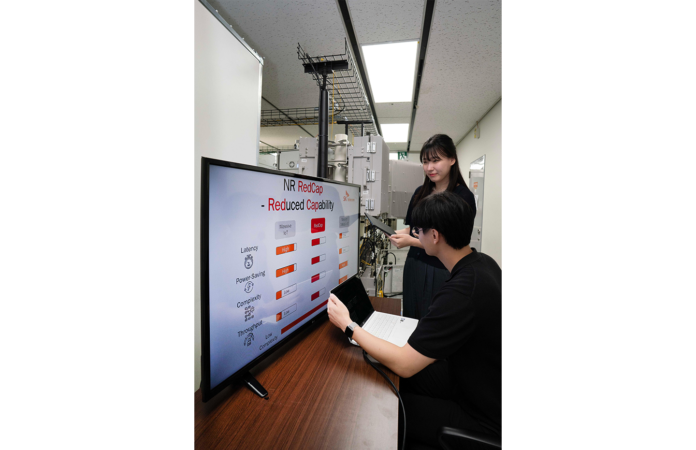Current tests are laying the groundwork for RedCap to be commercialized in the 2024-2025 timeframe
Carriers and network equipment manufacturers have stepped up tests and trials of 5G New Radio Reduced Capability (RedCap) in recent months. Geographically, these tests are taking place around the world, reflecting the global interest in 5G RedCap and the hope that the technology will both expand the 5G device ecosystem and 5G use cases.
So who is testing RedCap, and what do they anticipate that the technology will be used for? Among the recently announced tests:
-In August, AT&T laid claim to being the first U.S. carrier to conduct a RedCap data connection on its 5G Standalone network, both in the lab and in the field. “For lower-cost, lower-complexity IoT devices that do not need standard 5G NR but can benefit from higher bandwidth and lower latency capabilities than what LTE-M currently offers, RedCap is the way to go,” wrote Jason Sikes, adding that RedCap is designed for “devices currently served by LTE CAT-4 but [it] provides equivalent or better in performance with up to 150 Mbps theoretical maximum downlink throughput.” RedCap, he continued, “helps reduce the complexity, cost and size of 5G devices … [and] introduces options to allow devices to operate at lower power levels. These upgrades will bring 5G to products and applications full-featured 5G technologies are unable to serve like wearable devices such as smartwatches and AR glasses, as well as IoT devices for healthcare, asset tracking, smart home systems, fleet management and more.”
AT&T had about 117 million connected devices on its network as of the second quarter of this year, according to an AT&T blog post—that’s a lot of devices to eventually upgrade to 5G.
-Shortly after AT&T’s announcement, Verizon boasted of over-the-air RedCap voice and data calls which were successfully completed with support from Ericsson and MediaTek, using low- and midband spectrum including its C-Band holdings. The RedCap testing, Ericsson said, “paves the way for enterprise IoT solutions like video surveillance, industrial sensors, and smart grids to run more efficiently on Verizon’s 5G network. These devices, many of which have audio functions requiring voice connections, typically transmit and receive smaller amounts of data than smartphones, wireless routers or more robust enterprise solutions.”
Adam Koeppe, SVP of Network and Technology Planning at Verizon, said: “The evolution of this new light software coupled with the technologies deployed throughout our 5G network will allow us to provide the best possible experience for our customers in an efficient manner and will drive the 5G ecosystem with low-cost, energy-efficient devices.”
“Pioneering both data and VoNR calls on both low- and mid-bands on Verizon’s 5G standalone network demonstrates the capability of Ericsson RedCap as a software to boost a whole new range of use cases for both consumers and enterprises,” said Graham Osborne, VP and head of Customer Unit Verizon, Ericsson North America. “This over-the-air demonstration in a live C-Band environment with Verizon and MediaTek is critical to building an ecosystem that will bring multiple types of 5G devices to market.”
-Also in mid-August, Korea’s SK Telecom announced that it had worked with MediaTek and Nokia on the first field testing of a commercial RedCap pilot network in Korea—which the carrier said lays the “technological foundation for AIoT (AI+IoT) services in various devices such as wearables.” The company went on to say in a release that RedCap is “suitable for IoT devices such as wearable devices, connected cars, smart factories, and CCTV that must be connected to the network at all times.”
“This RedCap technology development and demonstration is significant in that it has secured the core technologies necessary for SKT’s 6G and AI technology evolution direction and has laid the technological foundation for AIoT services that combine artificial intelligence and IoT in the future,” said Ryu Tak-ki, SK Telecom’s CTO. He said that SK Telecom “will not only lead the ecosystem for commercialization of 5G IoT and AIoT, but also lead wearable technology.”
-In late September, Thailand’s AIS achieved the first collaborative testing in southeast Asia of RedCap at 2.6 GHz, in partnership with ZTE and MediaTek. The testing included basic RedCap services, as well as peak throughput, mobility and Voice over New Radio, ZTE said, adding that RedCap is “ushering in new possibilities for the development of the global cellular Internet of Things.”
The Chinese NEM said that the tests took place at the AZ Innovation Center in Bangkok, using AIS’ commercial TDD spectrum, and that the throughput tests “consistently achieved theoretical peak values”, noting that the downlink rate for a single RedCap user in a TDD network can reach 163 Mbps using 20 megahertz of bandwidth. ZTE said that its NodeEngine solution with RedCap support enables end-to-end latency of about 10 milliseconds.
Looking for more insights on RedCap as a technology, potential use cases and its strategic role in the 5G ecosystem? Register for the editorial webinar on Nov. 14 featuring Counterpoint Research, Fibocom and Viavi Solutions—and keep an eye out for our upcoming special report!

